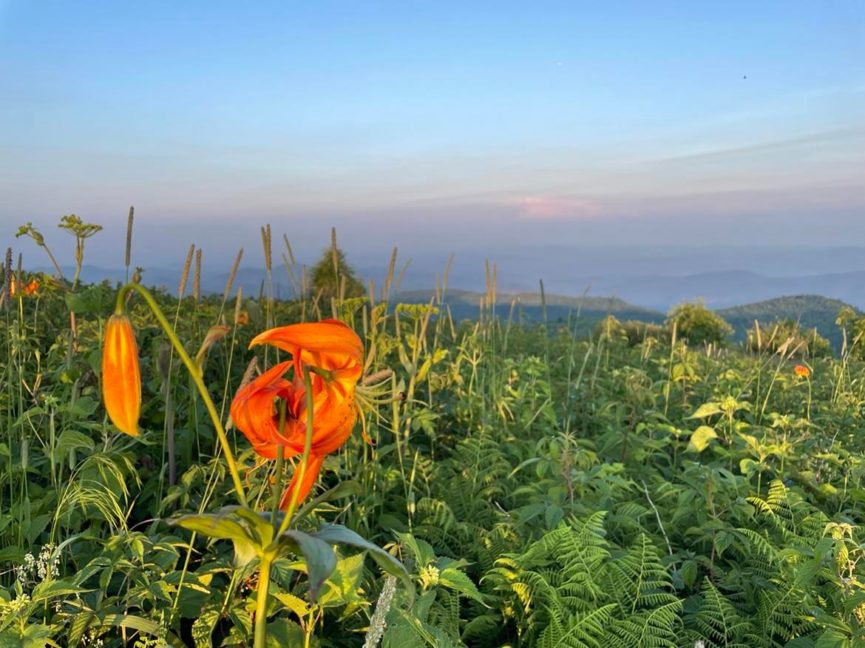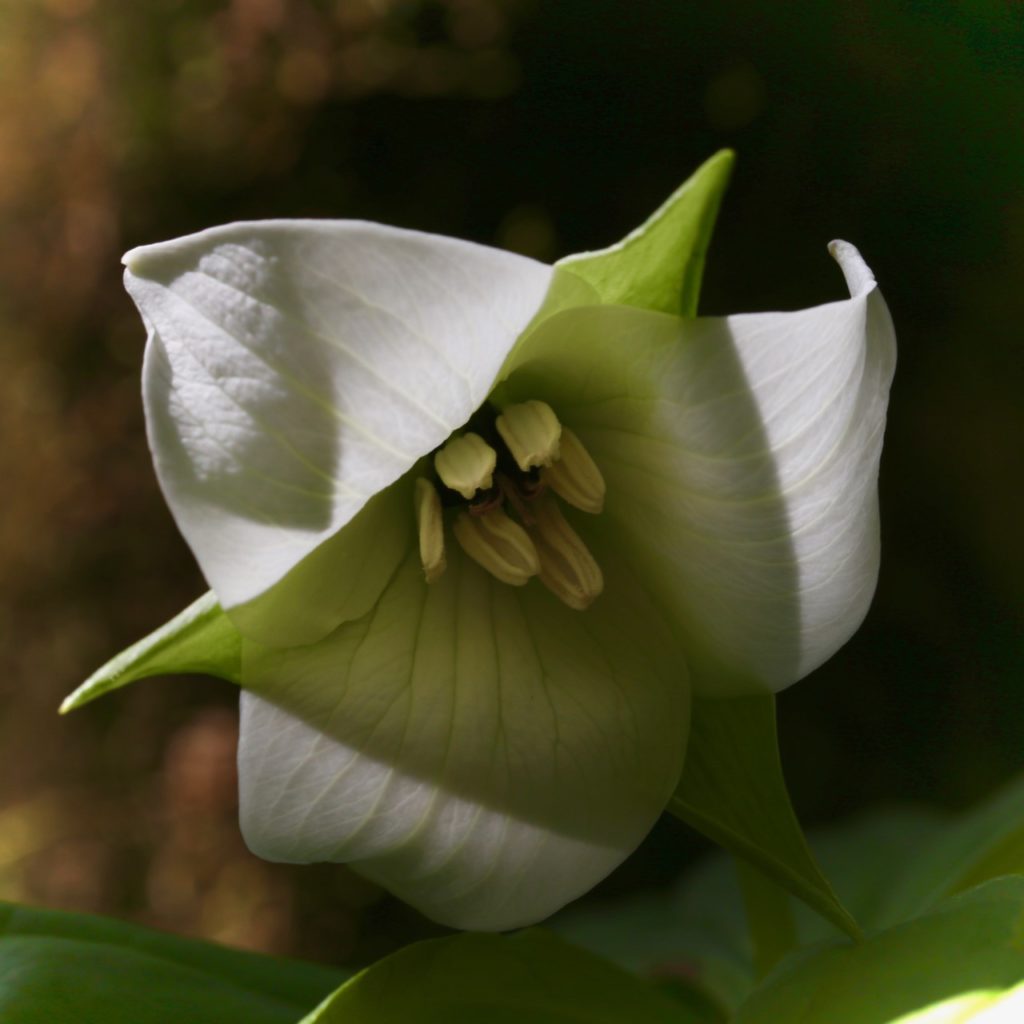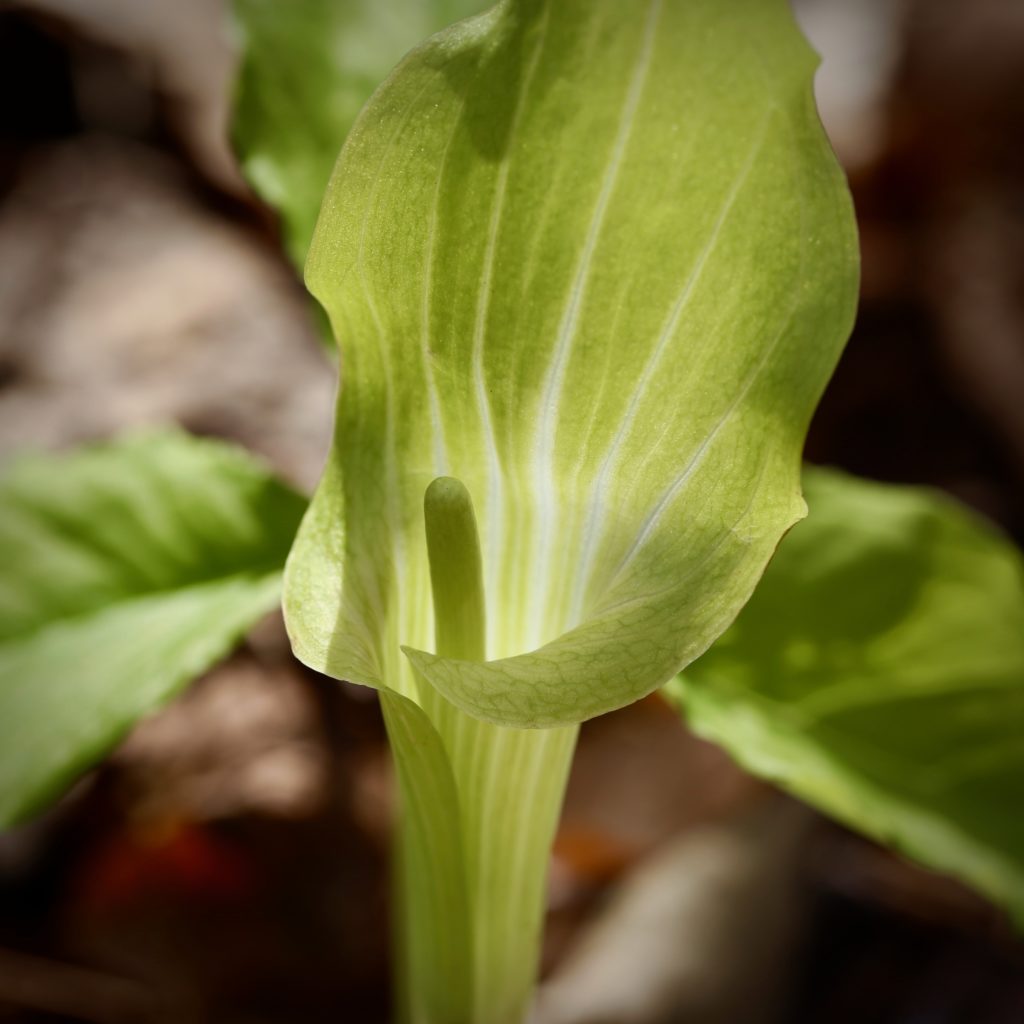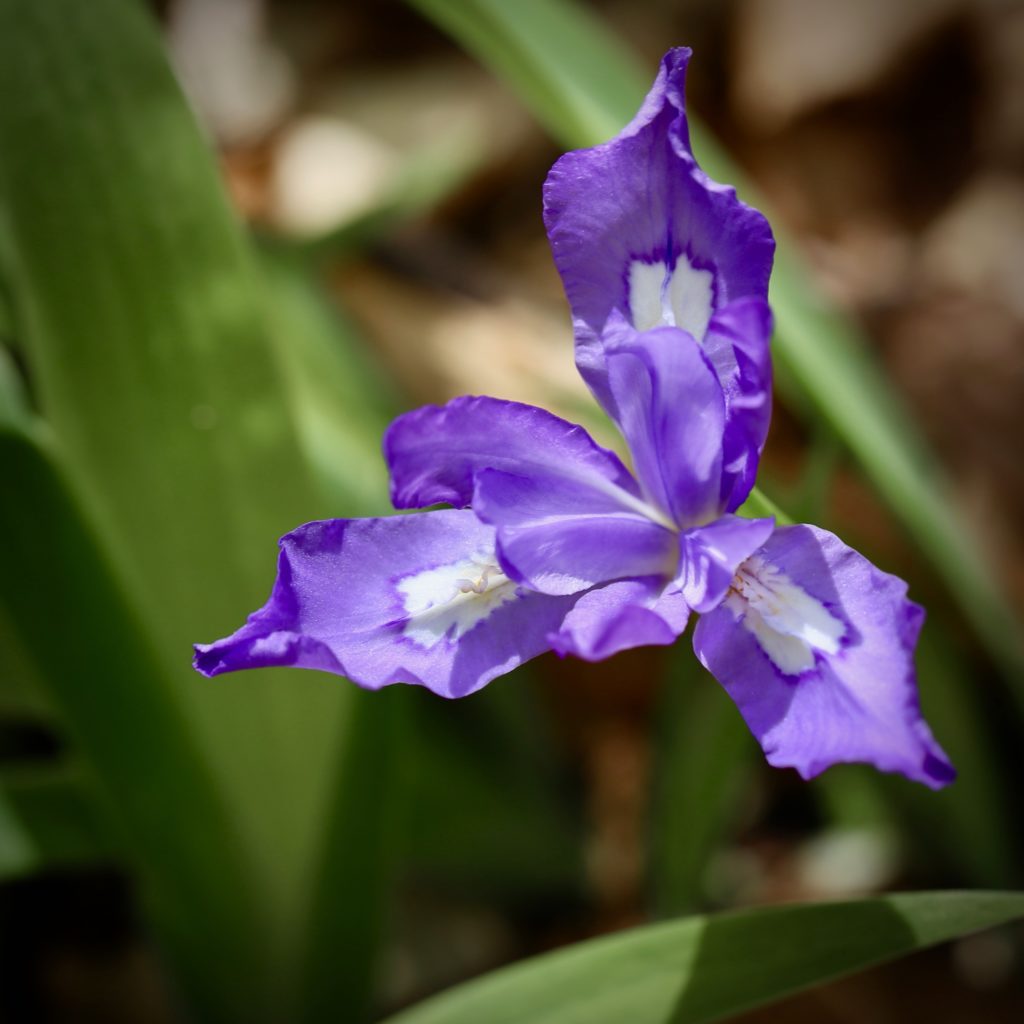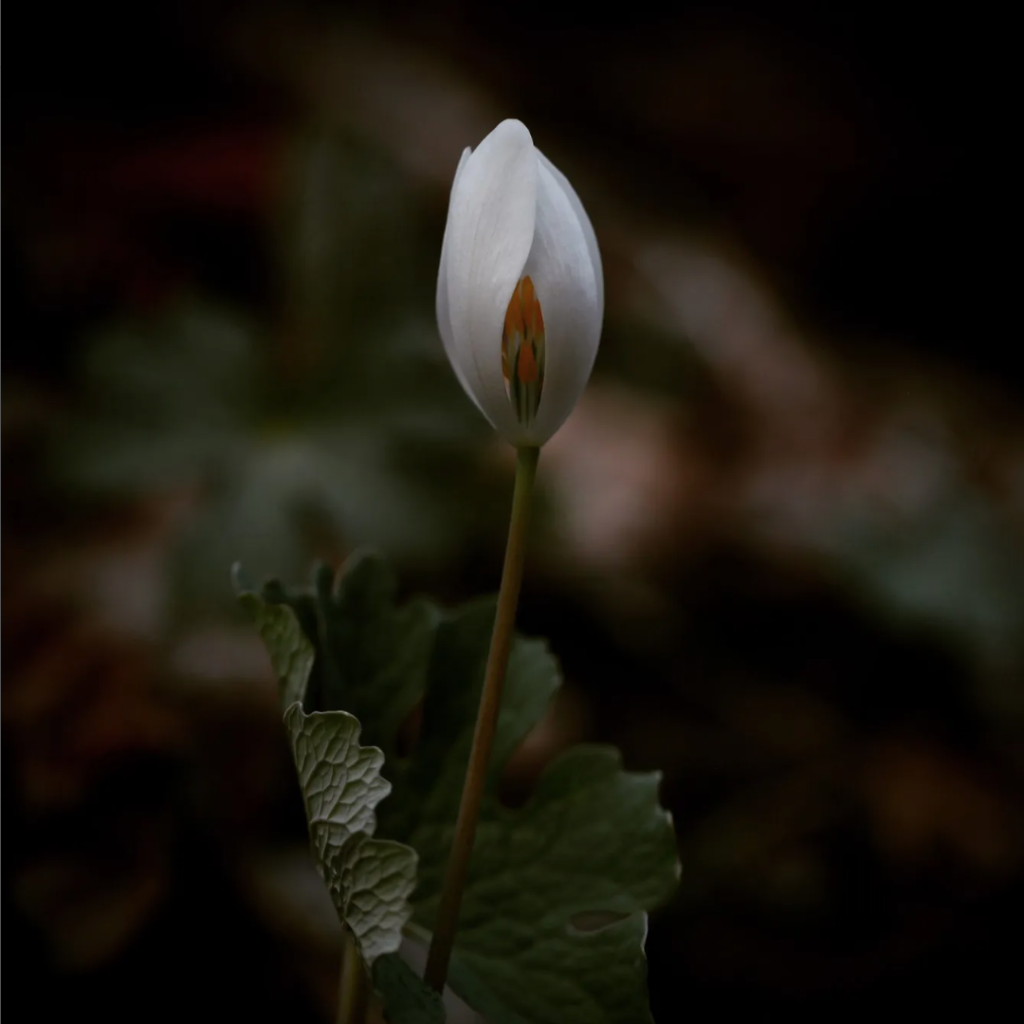You know what they say: April showers bring May flowers. Spring is in the air in the Southeast which means the wildflowers will be blooming and providing a brilliant showcase of color. If you’re planning a Southeastern rafting and zipline trip, you don’t want to miss out on wildflower viewing. Here is a complete guide to where and when to expect the wildflowers to bloom this spring.
Tennessee Wildflowers
If you’re visiting Wildwater’s Ocoee location this Spring, Great Smoky Mountains National Park is the ultimate stop to view wildflowers. The Great Smoky Mountains National Park is designated as an International Biosphere Preserve due to its abundance of biodiversity. There’s a relatively wide window to see the incredible array of flowers in the park, but spring is regarded as the best time to see wildflowers in the national park.
The earliest spring wildflowers to bloom are ephemerals like daffodils, jonquils, chickweed, and violets. As higher levels of precipitation greet the Smokies in the spring, the result is a more spectacular display of wildflowers. As late April and May arrive, you will have the chance to see trillium, white fringed phacelia, showy orchis, crested dwarf iris, and Dutchman’s breeches.
Best Places to See Wildflowers in Tennessee
With more than 1,600 different kinds of flowers growing in Great Smoky Mountains National Park, you won’t have to travel far to have an amazing wildflower viewing experience. Here are a few of the best places to see spring wildflowers in the Great Smokies:
If you’re driving:
Cades Cove Loop is a lovely scenic drive that features wild daffodils and jonquils. In the 1930, a Civilian Conservation Corp camp planted these flowers in a pattern that spelled out “CO 5427” — the official name of the CCC camp. Today, these flowers have spread across the whole field.
If you’re hiking:
Schoolhouse Gap Trail is a scenic 2.2 miles trail that begins at Laurel Creek Road. Along this trail, you will be greeted with Virginia bluebells, pink lady’s slippers, golden aster, trillium, and many more vibrant wildflowers as you climb up the trail.
Little River Trail is a flat graveled trail where you can see patches of rhododendron. From mid-March to through May, you’ll be able to see spring beauties and trailing arbutus.
Middle Prong Trail is the perfect option for wildflower lovers and waterfall gazers. This trail passes by three waterfalls. During the spring and early summer, you’ll see violets, crested dwarf iris, wood sorrel and trilliums.
North Carolina Wildflowers
Whether you’re rafting on the Nantahala near Bryson City, NC or ziplining in Asheville, there are bountiful places to see wildflowers during your Wildwater trip in North Carolina. Bryson City is located just west of the southern end of the Blue Ridge Parkway and the Cherokee entrance to Great Smoky Mountain National Park. Meanwhile, the Blue Ridge Parkway is just a stone’s throw away from Asheville. During the spring, wildflowers explode during the brief window where the trees are just beginning to leaf out before shading the forest floor (mid-April thru mid-May).
Best Places to See Wildflowers in North Carolina
If you’re driving:
Hop on the Blue Ridge Parkway to catch the spring bloom. You can view wildflowers on the side of the road, the beginning of the trails, and on the mountain sides. The forest floor is covered with various plants such as chickweed, wild ginger, liverlead, toothwort, trout lily, trillium, larkspur, and Jack-in-the-pulpit.
If you’re hiking:
Deep Creek Trail is located just outside of Bryson City in Great Smoky Mountain National Park and is abundant in wildflowers and waterfalls. You’ll find a variety of trilliums blooming at different times, as well as foamflower, galax, crested dwarf iris, bluets, and much more. As the trail gains elevation, you’ll find rhododendron, mountain laurel, and flame azalea.
Graveyard Fields is located at milepost 418.8 along the Blue Ridge Parkway. The loop trail takes hikers past waterfalls, through open meadows, and along forested paths. Visit in May or June for a peak at pink shell, flame azalea, and mountain laurel.
Joyce Kilmer Memorial Forest is located within Nantahala National Forest. Here you can hike a 2-mile loop that offers mesmerizing views of the centuries-old trees along with trillium, crested iris, dutchman’s breeches, and violets.
South Carolina/Georgia Wildflowers
If you’re visiting Wildwater’s Chattooga location this spring, make sure to schedule some time into your trip to go view the dazzling wildflowers that grace the southern Blue Ridge Mountains.
Best Places to See Wildflowers in South Carolina/Georgia
If you’re driving…
Tallulah Gorge State Park in Tallulah Falls, GA is home to one of the most spectacular canyons in the eastern U.S at two-miles long and nearly 1,000 feet deep. Permits are required to hike to the gorge floor but you can visit the various overlooks that line the rim. A 80-foot suspension bridge sways over the gorge and waterfalls making for a truly thrilling driving adventure. Trillium and monkey-face orchid are protected species found within the gorge.
If you’re hiking…
Yellow Branch Falls is a three-mile trail in Walhalla, SC, adjacent to the more widely-known Isaqueena Falls. The trail passes through rhododendron thickets which will be in bloom mid-May to mid-June. In the early spring, spring ephemerals will line the trail like spotted wintergreen and foamflower. The trail ends with a 75-foot cascade that will have you staring in wonder.
Station Cove Falls Trail in Walhalla, SC is the best of both worlds with waterfalls and wildflowers. This short, 30-minute hike will take you to a 60-foot waterfall. You will have the chance to see trillium, mayapple, pink lady’s slipper orchids, bloodroot, and redbud along the way.
The Trillium Trail at Nine Times Preserve in Pickens, SC is a short 0.25-mile hike that, as the namesake suggests, offers spectacular views of trilliums and other spring ephemerals. If you want a more challenging hike, there are two other hikes in the Preserve where you have the chance to see 134 species of native wildflowers.
If you’re planning on rafting or ziplining at the Chattooga, make sure to add these hikes to your trip itinerary. Don’t miss out on spring wildflower viewing and book your trip and stay with Wildwater today.

